The Evil Within is a great example of basic horror done perfectly right: solid protagonists, a mysterious villain, the feeling of vulnerability, and tons of stuff that will keep you on edge from beginning to end. All that being said, the core narrative does get a little too ambitious to the point that it gets far too vague to be appreciable. There’s a definite and palpable move away from sci-fi and more into the supernatural occult here (when being compared to Mikami’s previous work), but for the most part, it seems more like a misstep than an attempt at innovation. Still, the game manages to be engaging enough on other fronts to keep players interested.

What is The Evil Within?
The Evil Within is a survival horror game with action elements and a focus on sneaking. It has gained much attention for being Shinji Mikami’s first horror game after leaving Capcom and the Resident Evil franchise. Unlike RE, this game does not revolve around zombies. Instead, players are confronted with a unique and mysterious dilemma that begins with strange beings murdering everyone inside a hospital that is followed by trip to a bizarre and mind-boggling world full of ghoul-like things and monsters.

The game is played in a third person perspective, with over-the-shoulder views for combat (which is a mixture of melee and ranged weapons). The player can crouch, run, and make use of various environmental items (such as bottles) to use as weapons or distractions against enemies. Stages are presented in a mission based format and are played in according to chronological narrative order. During missions, the player may pick up various items that can be used to increase the protagonist’s abilities.
What is Going on Here?

In this game, players take on the role of Sebastian Castellanos, a detective who responds to an emergency at the Beacon Memorial Hospital. For the most part, Sebastian looks like your typical gruff, nonchalant, and mostly bored semi-retired-investigator-with-stubbles-and-gruff-voice kind of lead protagonist. It feels a bit generic but it works as it serves as a placeholder for the player. There are of course, moments where the Detective’s gruffness comes off as a little too unrealistic or detached. This is particularly true of his occasional in-game quips which make him seem unconcerned for his current situation. This is in stark contrast to his behaviour in the cutscenes which portray him as a little more sharp and expressive.
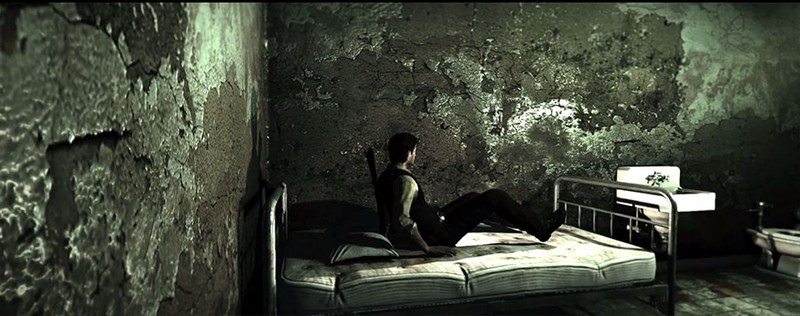
Anyway, the game starts with Sebastian and his co-investigators responding to an emergency call from a patrol car. They end up in the Beacon Mental Hospital where they discover that a lot of people of have died and other cops are being mercilessly assaulted by a strange hooded figure. Sebastian himself is attacked after he witnesses a slaughter in one of the surveillance camera feeds. Things get even weirder once he wakes up -captured by a strange creature and brought into some murder-slaughterhouse that is actually underneath the hospital.
Unlike the stronger and more action-oriented members of STARS and the BSAA, Sebastian is an old detective. A cop with a little too many things on his shoulders –this makes him slower, less accurate, and most importantly, a lot more vulnerable than RE characters. Combat has been attuned more towards sneaking and careful attacks as opposed to running and gunning (though there is still a good deal of that in the game).
There are a lot of details here that do not really make sense from a narrative perspective and there is absolutely no way for us to tell you without spoiling much of the content from the ending. The bottom line is that this game, like Resident Evil, has its’ true essence stated in the original Japanese title. RE has Bio Hazard which is in reference to the virus that creates the zombies. For The Evil Within, the original title is Psycho Break - I will leave that up to you readers to ponder on.
Reading Between the Lines
While I'm mostly impressed with the game, the narrative is sadly, The Evil Within’s weakest point. The game starts strong and hard with all the questions and mysteries, but the rest of the details and the explanations are given in such a way that they are either too vague or just plain unimpressive. This makes it hard to appreciate the 'clever' twists that occur near the end. Some elements, such as what is happening to Sebastian’s allies (Juli and Joseph) are pretty easy to predict. While others, such as the true nature of major antagonist Ruvik, feels a little too contrived.
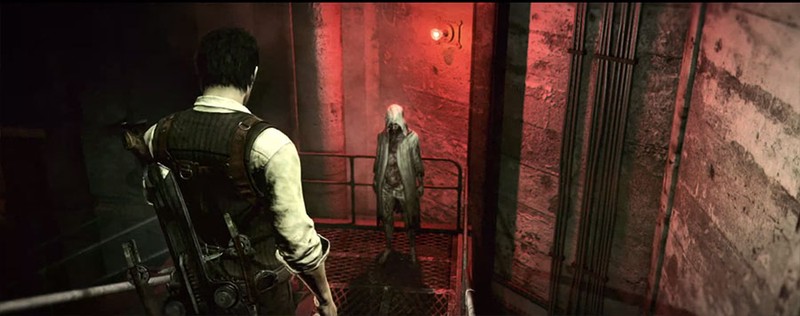
Sadly, the core story itself is not well written. While there should always be a level of complexity in any tale, this one is a little too convoluted in its own twists that it starts becoming a jumble of information instead of something that builds a foundation of horror. By the time you reach the ending of the game, the story becomes far too complex to fit the feel of the game.
This is a distant jump from the clever storytelling seen in Mikami’s previous works. Of course, it can also be said that he is not really the master of good storytelling (unlike his peers, such as Kojima and Suda). What he is good at is delivering a good scare, and The Evil Within manages to do that quite nicely.
Play it for the Creeps

The bottom line of any horror game is the fact that it makes you feel scared when you play it - and the Evil Within manages to do exactly that. From the start menu to the very end credits, the game is laced with all the key elements that makes a horror game so creepy-fun to play.
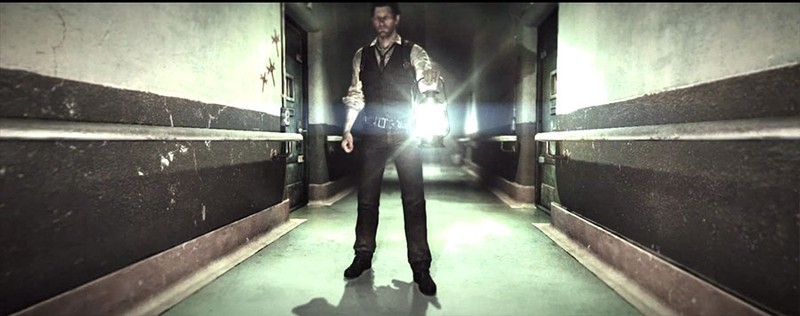
The camera angles, lighting, and even the textures in this game are designed to give players a sense of distrust in the environment. Everything feels hostile and menacing -even the empty hallways feel like they were designed to draw the very essence of joy from anyone who walks through them. This works well in the game’s favour as it really cranks up the scare-factor a notch or two. So yes, when you are not too busy scratching your head over the narrative, you will actually enjoy feeling your spine tingle with all the little paranoia-inducing lighting effects and well-placed jump scares.
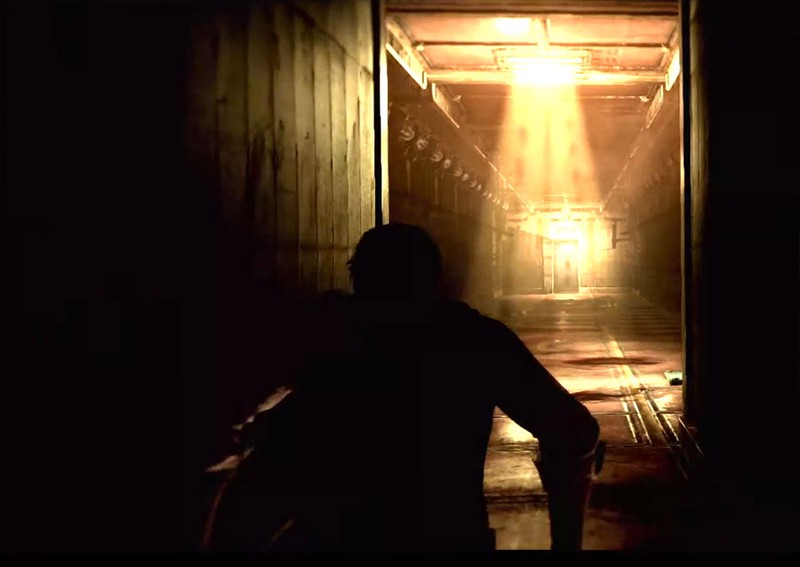
Shinji Mikami mixes things up this time - combining the macabre with the surreal and the fantastic. It also helps that the game has exceptionally pretty visuals. From the characters to the backgrounds, everything looks in place and are part of a greater graphical whole.
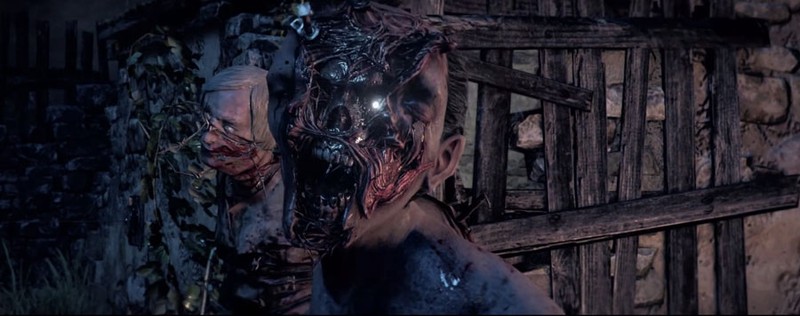
The animations are also well done. The way that the ghoulish creatures move and shuffle about their routes, to the way that crazy chain-wielding brute lumbers around, each hostile creature you meet feels real since it moves and acts real. And this makes the danger and threat they present to you all the more believable. One exception to the creatures bit would have to be the pseudo-pyramid head boss creature that has a safe for a head. That one actually felt a little too goofy to be truly scary.

There’s a good deal of hiding done in the game, and Sebastian’s context sensitive actions make him also a part of the world you are playing. Keeping him out of sight of creatures is no easy task, and this is where the game can be at its’ scariest. Indeed, the experience of playing The Evil Within manages to stand well without the overbearing narrative - and that is a testament to the developer’s skill in creating a game.
Drawbacks: Clumsy Stealth and Platforming

Pinning down the point where this game manages to fail in terms of game play, it all boils down to two factors: stealth and platforming. Okay, to be clear, The Evil Within is a 3D survival horror game - the platforming bit actually comes in the form of massive traps, spikes, and twirling blades of bloody death. Visually, they make quite an impact and will certainly instil fear in you.
As a part of the game however, Sebastian’s movement animations are far too clunky (there’s several frames of pre and post action animation that will trip you up in terms of timing) for precision movement when it comes to running across dangerous rooms designed to chew you to bits. This becomes a bit of a frustrating thing for players who are not used to the movement in the game.
This problem permeates through the stealth based portions are well. There are many parts where you have to avoid being detected by enemies that would kill you instantly. And simply put, the stealth movement takes too long to get used to. You should also expect to end up triggering traps well before mastering how to disarm them simply because the walking animations have terrible timing.
Understanding the Gameplay
One important thing for would-be players of The Evil Within is you need to be patient. The game’s lack of strategically sensible check points and absolute absence of save points means that if you fail at the very end of a major part of the game, expect to go through the whole thing from the top. This means cut scenes, avoiding death traps, sneaking through monsters, and a whole lot of other time-consuming things before you finally get to whatever bit it was that killed you in your previous outing. Not the most fun thing to do, so it helps to know what to expect beforehand.
The good news is that fighting is actually fun. Sure, as one would expect, ammunition and weapons in the game are scarce (which makes the enemies more dangerous in general giving a major feeling of vulnerability to the player). But it feels good to have a lot of options at your disposal. Sometimes, a straightforward approach with guns blazing is not an option. Sneaking your way through and stealth-killing the Haunted is satisfying and so is tricking them with a well timed bottle throw. This gets even more fun once you have the crossbow and special abilities.
Also, after running away from big baddies for a dozen stages, you will be able to start fighting back against them near the end of the game (which is very satisfying as they feel like bullies by then). Giving enemy creatures story-based immunity is one thing, but to have to keep running away from them for a large part of the game can be frustrating especially if there is no context as to who or what they are. At least you get some overdue payback (along with partially acceptable explanations) before it all ends.
The B-Movie Ending
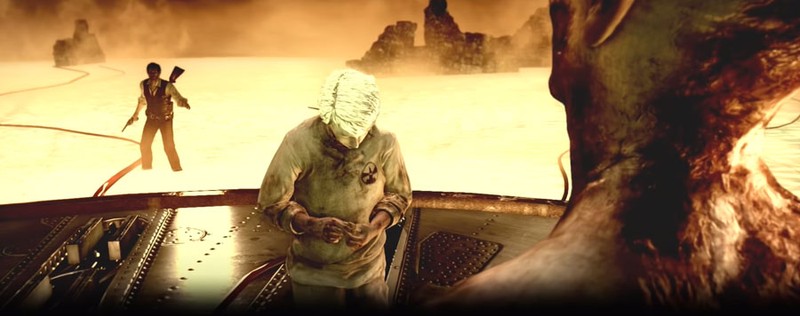
Like a typical horror movie, The Evil Within’s got a few surprises and twists in the final stages - which is where you will learn about the true nature of what Ruvik is, what was going on in the hospital, and what is really going on with the sequences where you are back in that sanitarium with the freaky chair. The sad part about this is that the explanations are hardly satisfying or fulfilling to hear.
While the plot if very complex, it still feels unimpressive due to the convoluted way it was executed. The worst bit is that it makes Sebastian’s struggles feel a little cheap and wasted. The bits with Juli and Joseph are a lot more intriguing - which makes sense as there’s a lot of stuff left hanging which will only make sense if you play through the additional DLC content which revolve around what happened to Juli. Considering that, the entire ending is basically a giant lead-in to getting players to play the DLCs. And that is just a horrible way to deal with a story.
In case I'm leaving too harsh an impression about the game's story delivery - there is still a lot of great nuanced storytelling techniques put into the game. Mostly, they are subtle things. One is the way that the camera just pans at the right angle to give players necessary information about what is currently happening in the situation. The use of empty wine bottles to distract enemies alludes to Sebastian’s previous struggle with alcoholism as a method of avoidance. Even the way the camera tends to stick a little too close to Sebastian’s back makes the entire game world feel a little more hostile and foreboding.
In Case You Missed It
The Evil Within may be a horror game, but it has it’s fill of interesting things. Most of which are homages to Resident Evil because, well, reasons. After all, if Kamiya made Bayonetta, Inafune is making Mighty No. 9, and Igarashi has Bloodstained in the works, then Mikami has pretty much every reason to make a game in the same vein as his most iconic creation (besides, he pretty much created the survival horror genre).
The Evil Within - Resident Evil?
Simply put, it is much easier to enjoy and appreciate The Evil Within if you have played the Resident Evil games; maybe not all of them, but at least a couple, and especially the first one and RE4. Take that very first moment when you encounter the Haunted in the form of a former cop. The camera angle, movement, and lighting matches the first reveal in RE1. There’s also a whole load of other things - cranks, items in breakable environmental boxes, the dual-staircase in the Arklay mansion with the chandelier, and even the way you have to keep running from big giant bosses (channeling good old Nemesis from RE3). There’s even a shady organization behind everything bad that is happening (just like Umbrella).
Conclusion: This Game is Pretty Niche
While Resident Evil had a more general public appeal in terms of delivering something new, The Evil Within was obviously made for core survival horror fans. And even then, it panders more towards folks who like their horror stories to be a little messed up and broken in that weird way that some scary films are - a little vague, a little shocking, and plenty confusing.
In general, the slightly clumsy game play will turn off some fans. Those who decide to soldier on with the game’s quirky mechanics will be rewarded with amazingly well directed visuals (there are plenty of screencap-worthy moments throughout the game). While there are a few who dislike the letterbox framing –that’s a matter of personal preference. For some, it makes the camera view too narrow, for others, it is an interesting use of cinematic framing. Simply put, this is an incredibly beautiful horror game.
Challenge-wise, do not expect to breeze through this game - not with Mikami’s penchant for creating clever traps and the game’s unbelievably klutz-like controls. But it does feel highly satisfying to get through the stages (but yes, there are some highly frustrating points especially if you are playing on any difficulty above easy).
Overall, for a game that many are considering the spiritual successor to Resident Evil, this one ends up more on the disappointing side. Which is not all that surprising since the expectation bar is ridiculously high. What is surprising is how big the gap between the two series is. There is no doubt that The Evil Within is a fairly decent horror game, but one that is still a little too rough and unpolished. If this was an indie-developed title, I would be more likely to be tolerant of the issues, but Mikami and his crew are veteran game developers, and publisher Bethesda Softworks is no slouch either.
Comments